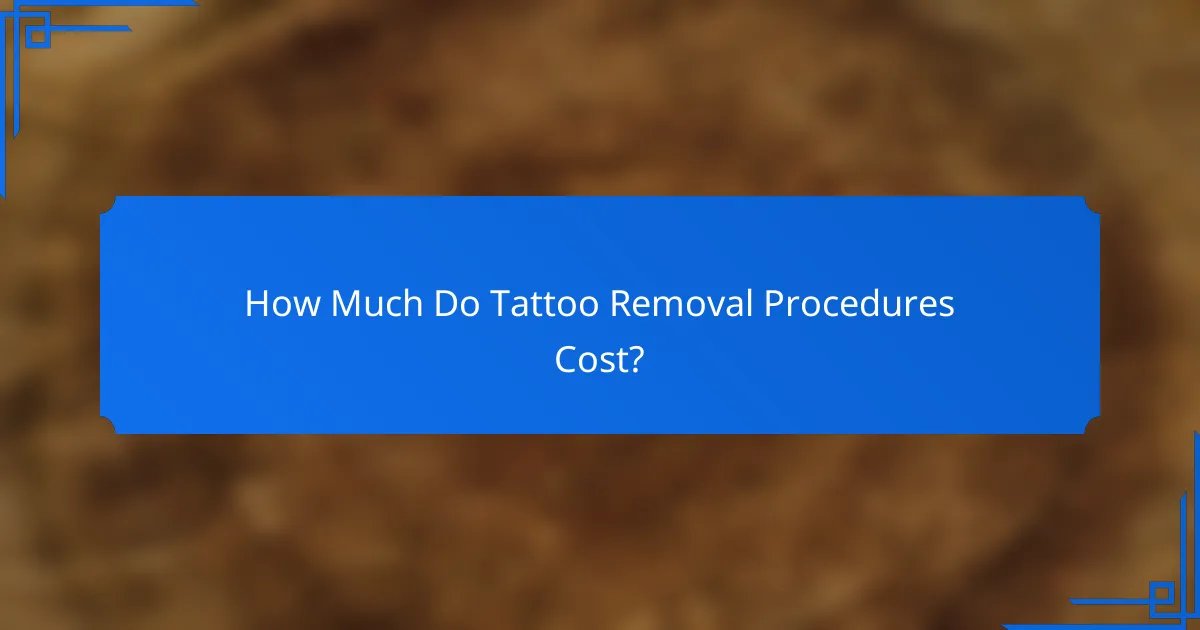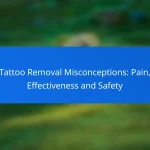Tattoo removal has become increasingly popular, with various methods available to help individuals erase unwanted ink. Techniques such as laser removal, dermabrasion, and chemical peels each offer different levels of effectiveness, costs, and recovery times. Understanding these factors is crucial for making an informed decision tailored to your specific needs and tattoo characteristics.

What Are the Most Effective Tattoo Removal Methods?
The most effective tattoo removal methods include laser tattoo removal, dermabrasion, chemical peels, excision, and saline tattoo removal. Each technique varies in effectiveness, cost, and recovery time, making it essential to choose the right one based on individual needs and tattoo characteristics.
Laser tattoo removal
Laser tattoo removal is the most popular and effective method for eliminating unwanted tattoos. It works by using high-intensity light beams to break down the ink particles in the skin, which are then absorbed and eliminated by the body.
Typically, multiple sessions are required, often ranging from 5 to 15, depending on the tattoo’s size, color, and depth. Costs can vary significantly, generally falling between $200 to $500 per session in the United States.
Dermabrasion
Dermabrasion involves mechanically sanding the skin to remove the outer layers where the tattoo ink resides. This method is less common today but can be effective for certain tattoos.
Patients should expect some discomfort and a longer healing time, as the skin needs to regenerate after the procedure. Costs for dermabrasion can range from $1,000 to $3,000, depending on the extent of the treatment.
Chemical peels
Chemical peels use acidic solutions to exfoliate the skin and fade tattoos over time. This method is less effective for deep or multi-colored tattoos but can work well for superficial ones.
Multiple treatments are usually necessary, and costs can range from $100 to $500 per session. It’s crucial to consult a professional to determine the right type of chemical peel for your specific tattoo.
Excision
Excision involves surgically removing the tattooed skin and stitching the remaining skin together. This method is effective for small tattoos and provides immediate results.
However, it leaves a scar and is not suitable for larger tattoos. The costs can vary widely, typically between $1,000 and $3,000, depending on the size and location of the tattoo.
Saline tattoo removal
Saline tattoo removal uses a saline solution injected into the skin to draw out the ink. This method is considered less invasive and can be effective for certain types of tattoos.
While it may require several sessions, costs are generally lower than laser removal, ranging from $100 to $300 per session. It’s important to consult with a trained professional to assess its suitability for your tattoo type.

How Much Do Tattoo Removal Procedures Cost?
The cost of tattoo removal procedures varies significantly based on the method used, the size and complexity of the tattoo, and the location of the treatment. Generally, prices can range from a few hundred to several thousand dollars, depending on these factors.
Average cost of laser removal
Laser removal is the most common method and typically costs between $200 and $500 per session. Multiple sessions are usually required, often ranging from 5 to 10, depending on the tattoo’s size and ink depth. Overall, total costs can reach from $1,000 to $5,000 or more.
Cost of dermabrasion
Dermabrasion involves physically sanding the skin to remove the tattoo and can cost between $1,000 and $3,000 for the entire procedure. This method may require fewer sessions than laser removal, but it can involve more discomfort and a longer recovery time.
Factors affecting pricing
Several factors influence the pricing of tattoo removal, including the tattoo’s size, color, and age, as well as the chosen removal technique. Geographic location also plays a role; urban areas may have higher prices due to increased demand and overhead costs.
Additionally, the experience and qualifications of the practitioner can affect costs. It’s essential to choose a certified professional to ensure safety and effectiveness, which may come at a premium.

What Is the Effectiveness of Each Method?
The effectiveness of tattoo removal methods varies significantly based on the technique used, the tattoo’s characteristics, and individual skin types. Understanding the success rates and limitations of each method can help you make an informed decision.
Success rate of laser removal
Laser removal is widely regarded as the most effective method for tattoo removal, with success rates often exceeding 90% for complete removal. The process involves using concentrated light beams to break down ink particles, which are then absorbed by the body.
Factors influencing effectiveness include the tattoo’s age, color, and depth. Darker inks, especially black, tend to respond better to laser treatment, while lighter colors may require more sessions and may not fully disappear.
Effectiveness of dermabrasion
Dermabrasion involves physically sanding the skin to remove the tattooed layer. This method can be effective but is generally less favored than laser removal due to its invasive nature and potential for scarring.
Success rates vary, with many individuals experiencing partial removal rather than complete fading. Recovery time can be significant, and the procedure may require multiple sessions to achieve desired results.
Results from chemical peels
Chemical peels use acidic solutions to exfoliate the skin and fade tattoos. This method can be effective for superficial tattoos but typically has lower success rates compared to laser removal.
Results depend on the peel’s strength and the tattoo’s characteristics. Multiple treatments may be necessary, and there is a risk of skin irritation or discoloration, especially for deeper inks.

What Are the Risks and Side Effects?
Tattoo removal methods can lead to various risks and side effects, which vary depending on the technique used. Understanding these potential issues is crucial for making informed decisions about tattoo removal.
Common side effects of laser removal
Laser tattoo removal is generally safe, but it can cause side effects such as redness, swelling, and blistering in the treated area. These effects typically resolve within a few days to weeks.
Some individuals may experience changes in skin pigmentation, either lightening or darkening of the skin, which can be temporary or permanent. It’s important to consult with a qualified professional to discuss these risks before proceeding.
Risks associated with dermabrasion
Dermabrasion involves sanding the skin to remove the tattoo, which carries risks such as infection, scarring, and prolonged redness. The procedure can be painful and may require local anesthesia.
After dermabrasion, proper aftercare is essential to minimize complications. Keeping the area clean and protected can help reduce the likelihood of infection and promote healing.
Potential complications of excision
Excision is a surgical method that involves cutting out the tattooed skin, which can lead to complications such as significant scarring and changes in skin texture. This method is typically reserved for smaller tattoos.
Patients should be aware that excision requires careful planning and may involve stitches, which need to be monitored for signs of infection. Consulting with a board-certified surgeon can help ensure the best possible outcome.

How to Choose the Right Tattoo Removal Method?
Choosing the right tattoo removal method depends on factors such as the tattoo’s size, age, location, and your skin type. Consider the effectiveness, cost, and potential side effects of each method to make an informed decision.
Laser Tattoo Removal
Laser tattoo removal is one of the most popular and effective methods available. It works by using high-intensity light beams to break down the ink particles in the skin, which are then absorbed by the body. Typically, multiple sessions are required, and the number can vary based on the tattoo’s complexity.
Costs for laser removal can range from a few hundred to several thousand USD depending on the size and color of the tattoo. It’s essential to consult with a certified professional to assess your specific needs and get an accurate estimate.
Dermabrasion
Dermabrasion involves physically sanding the skin to remove the tattoo. This method can be effective but may cause significant discomfort and requires a longer healing time. It is generally more suitable for smaller tattoos.
The cost for dermabrasion can vary widely, often falling between a few hundred to over a thousand USD. Patients should be aware of potential scarring and should discuss all risks with a qualified practitioner.
Saline Tattoo Removal
Saline tattoo removal uses a saline solution injected into the skin to draw out the ink. This method is less invasive than laser removal and can be effective for certain types of tattoos, particularly those that are not too deep.
Prices for saline removal typically range from a few hundred to around a thousand USD per session. It’s important to note that multiple sessions may be necessary, and results can vary based on the tattoo’s characteristics.
Excision
Excision involves surgically removing the tattooed skin and stitching the remaining skin back together. This method is most effective for small tattoos and is a permanent solution.
The cost of excision can be higher than other methods, often exceeding a thousand USD, depending on the tattoo’s size and the surgeon’s fees. Patients should consider the potential for scarring and the need for a skilled surgeon to minimize risks.


